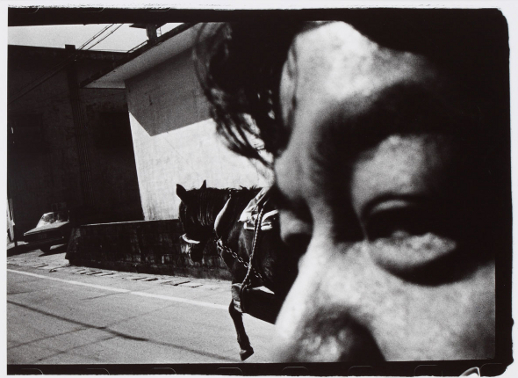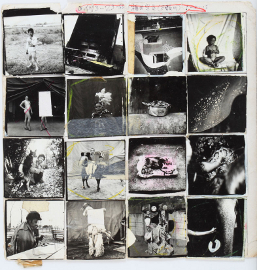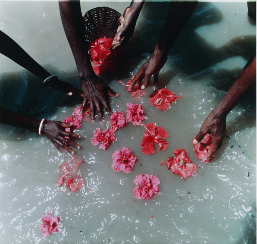Unresolved Parts in Photobook Layers
The exhibition “Hundred Steps and Thousand Stories” at the National Museum of Modern Art presents work from Japanese photographer Kiyoshi Suzuki’s thirty-year career in a way that is as unconventional and Suzuki himself. A central element of Suzuki’s work is the medium called the photobook, which he constructed layer by layer and published himself. The structure of the show parallels this spirit in which Kiyoshi worked and presented; rather than focusing on isolated images, the show highlights the process itself. Published books, dummy books, collages, sketches, and hand drawn plans for future shows — each of these objects are granted equal weight when we view Suzuki’s work. In this way, we are invited to consider the sum of all of the unresolved parts, of what it means to engage with the world through photography.

The show presents the contents of all eight of Suzuki’s photobooks: “Soul and Soul” (1972), “The Light That Has Lighted The World” (1976), “Mind Games” (1982), “S Street Shuffle” (1988), “The Ship of Fools” (1991), “Southern Breeze” (1992), “Finish Dying” (1994), and “Durasia” (1998). Whether shooting mining towns, the circus, wanderers, foreign countries, or his parents, Suzuki’s images reflect his intimate dedication to addressing self-exploration, sense of place, and conflicting social landscapes. Lyrical and surprising, Suzuki’s work engages multiple voices from past and present. Within a single series of images, we experience the real and the imaginary, dreams and memory, and the space that emerges between them.

Another interesting element present in Suzuki’s work is the tension between photographer and subject. New ideas about photography were developing in the Sixties among contemporary Japanese photographers, a movement that would come to be known as kompora. As described by curator Rei Masuda, a primary concern of the time was the notion that rather than pursuing the act of photography according to a preconceived principle or contention, the only way to realize a photographic expression was to investigate and develop a relationship between photographer and subject, one that was grounded in ordinariness of everyday life.

In viewing Suzuki’s work, we can appreciate the resonance of the un-manicured image and the compelling questions each image poses.
The National Museum of Modern Art’s “Hundred Steps and Thousand Stories” successfully pays tribute to the life and work of the late Kiyoshi Suzuki, a life that certainly appears to have been full of earnest curiosity, a unique way of engaging with the world, and, of course, an incredible photographic eye.
Erika Raberg
Erika Raberg



